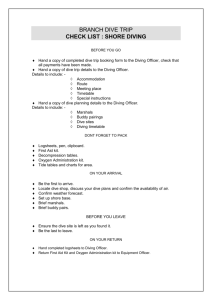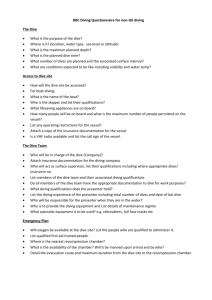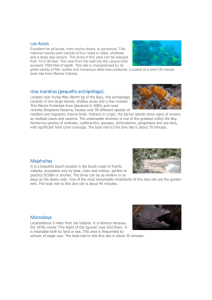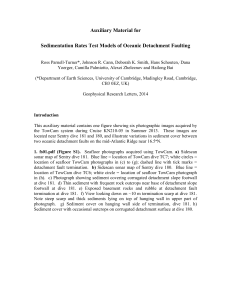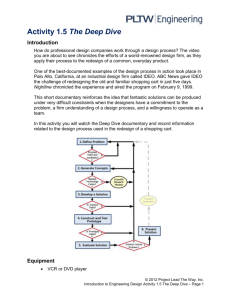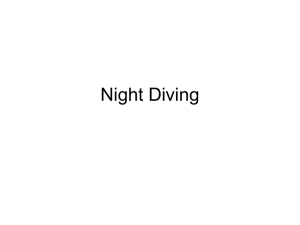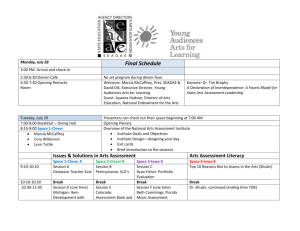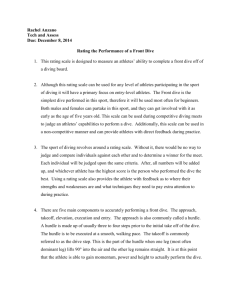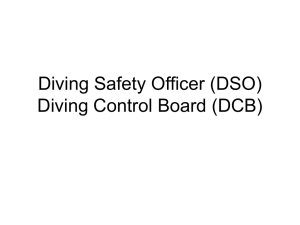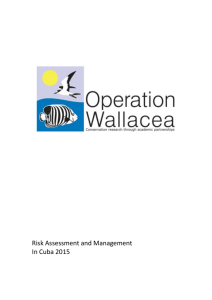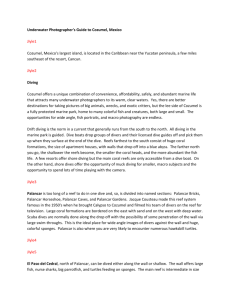Diving Overseas Guidelines
advertisement
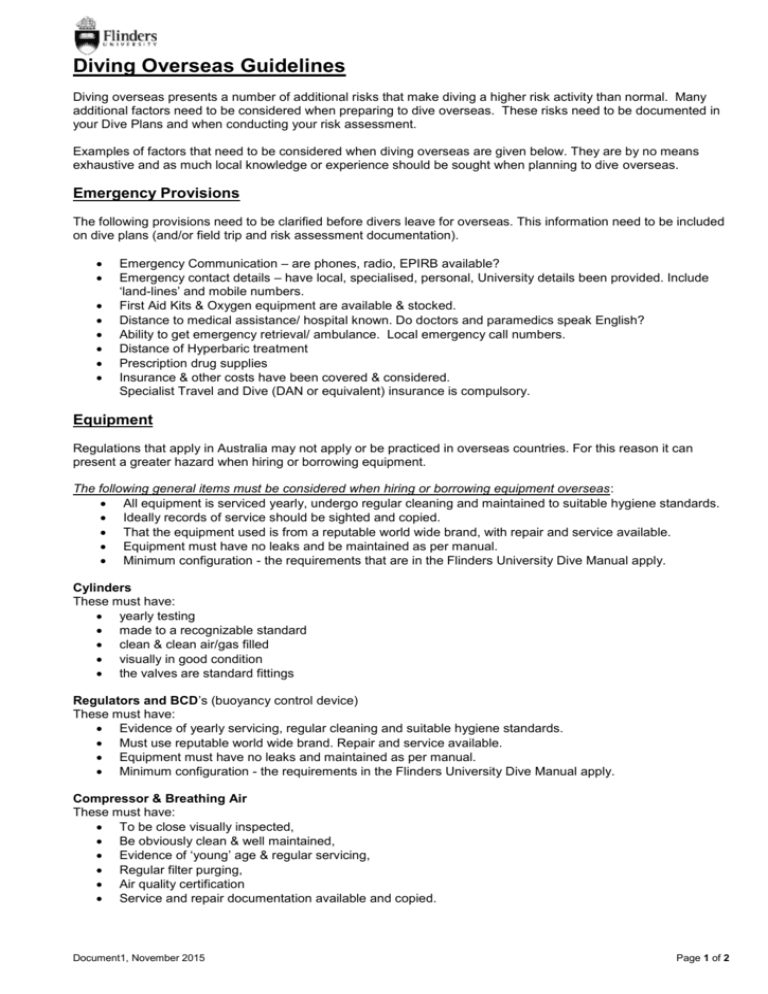
Diving Overseas Guidelines Diving overseas presents a number of additional risks that make diving a higher risk activity than normal. Many additional factors need to be considered when preparing to dive overseas. These risks need to be documented in your Dive Plans and when conducting your risk assessment. Examples of factors that need to be considered when diving overseas are given below. They are by no means exhaustive and as much local knowledge or experience should be sought when planning to dive overseas. Emergency Provisions The following provisions need to be clarified before divers leave for overseas. This information need to be included on dive plans (and/or field trip and risk assessment documentation). Emergency Communication – are phones, radio, EPIRB available? Emergency contact details – have local, specialised, personal, University details been provided. Include ‘land-lines’ and mobile numbers. First Aid Kits & Oxygen equipment are available & stocked. Distance to medical assistance/ hospital known. Do doctors and paramedics speak English? Ability to get emergency retrieval/ ambulance. Local emergency call numbers. Distance of Hyperbaric treatment Prescription drug supplies Insurance & other costs have been covered & considered. Specialist Travel and Dive (DAN or equivalent) insurance is compulsory. Equipment Regulations that apply in Australia may not apply or be practiced in overseas countries. For this reason it can present a greater hazard when hiring or borrowing equipment. The following general items must be considered when hiring or borrowing equipment overseas: All equipment is serviced yearly, undergo regular cleaning and maintained to suitable hygiene standards. Ideally records of service should be sighted and copied. That the equipment used is from a reputable world wide brand, with repair and service available. Equipment must have no leaks and be maintained as per manual. Minimum configuration - the requirements that are in the Flinders University Dive Manual apply. Cylinders These must have: yearly testing made to a recognizable standard clean & clean air/gas filled visually in good condition the valves are standard fittings Regulators and BCD’s (buoyancy control device) These must have: Evidence of yearly servicing, regular cleaning and suitable hygiene standards. Must use reputable world wide brand. Repair and service available. Equipment must have no leaks and maintained as per manual. Minimum configuration - the requirements in the Flinders University Dive Manual apply. Compressor & Breathing Air These must have: To be close visually inspected, Be obviously clean & well maintained, Evidence of ‘young’ age & regular servicing, Regular filter purging, Air quality certification Service and repair documentation available and copied. Document1, November 2015 Page 1 of 2 Environment It is imperative that the Dive Coordinator has a good understanding of the local conditions for which they are planning to dive when overseas. The range of risks is large but some of the items to consider include: Extreme local weather events such as cyclones, tropical storms, ice and snow etc. Potential communication difficulties if not all parties speak English Cultural fishing grounds, pirates, potential problems with local officials. Getting equipment to location (available transport) including need to use trailers/ tow. Availability of medical assistance Sharks & other dangerous marine animals Shipping lanes, boat access, wharf, docking issues Water temperature may vary significantly from those found in Australian waters. Local knowledge should be sought. The appropriate PPE/suit should be used e.g. wetsuit, dry suit, no suit (but should use coveralls to protect from stingers/ other). Hot or cold environments may pose additional risk & cause fatigue & dehydration. Boats The following must be considered when hiring or borrowing boat(s) overseas Size, draught, range of boat Boat operator –need for Master, Coxswain, deckhand and their qualifications and skills. Boating safety equipment - standard equipment, life jackets, oxygen, first aid, EPIRB, dive flags. Navigation & boating laws, channel markers, navigational lights, boat launching, wharf & docking requirements. Licensing & insurance requirements Electronics – Radio, GPS, depth sounder, Radar, geo-physical gear, side scan radar, drop video camera. Boat set up – bridge, ladder, steps, mermaid lines, shot lines, hand holds, motor, propeller guards, anchors, spare lines, auxiliary motor, battery, cranes, lifting equipment, shade, cabin. Emergency Procedures and rescue organisations. Operational Procedures – emergency entry/ exit, sign-in / sign out procedures, signals & spare dive gear. Dive Paperwork Some dive paperwork must be used, kept or copied and attached to the ‘Post-Dive’ form and submitted to the FDA. In general a documented dive system (usually paper based) is required. This may follow the organisation with which divers are working or the Flinders University versions. Diver registration; qualifications, medical, dive log /experience. Dive and Boat Plans. Risk Assessment for travel, stay, diving and tasks. Dive Team, times, depths, deco Assessment of the environment Divers Logbook; counter-signed. Other Of course the are many other factors that need to be considered when travelling overseas that are not specifically related to diving such as, vaccinations disease political climate visa’s etc.. This information should be recorded in the field trip and risk assessment documentation. Document1, November 2015 Page 2 of 2
